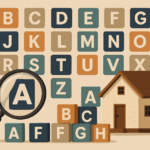
Key takeaways
Fiscal 2026 looks like a mature, fundamentals-driven market phase.
The “boom” phase is over, but solid, location-driven growth remains.
Biggest threats are external (global shock, policy misstep) or systemic (debt, construction failures).
For now: a cautious thumbs-up, but a clear warning – Australia’s economic good times aren’t guaranteed to last.
Long-term fix? Boost productivity, rein in government spending, and refocus on real economic outcomes, not political window dressing.
What’s the Australian housing market likely to do in fiscal 26?
And are we staring down the barrel of a recession?
I get asked about the R word a lot these days. Increasingly so.
So, let’s tackle both, because the two are more intertwined than most think.

The recession question
First things first. Are we likely to hit a recession in fiscal 26?
Technically, a recession means two consecutive quarters of negative GDP growth.
At this stage, major institutions are not forecasting that outcome.
The Reserve Bank of Australia (RBA), Treasury, and outfits like KPMG, NAB, and the OECD all point to moderate growth - roughly between 1.8% and 2.3%.
So, just limping along.
Unemployment is tipped to hover around 4.5%, and while that’s a bit higher than today, it’s still within what economists call the “full employment” range.
I think that the ABS employment figures are BS, but regardless of the actual count, the employment outlook, for now, is little change over the next twelve months.
So, recession?
Unlikely. But not impossible.
The consensus puts the odds somewhere in the sub 20% range.
What could tip us into recession?
A global shock? Rising damp? A housing crash?
Housing market outlook
What’s the housing market likely to do?
Short version: growth, but slower and more uneven than recent years.
The big post COVID run-off is done and dusted, and what we’re left with is a patchwork of undersupply, affordability pressure, and a surprisingly resilient demand base.
Here’s a breakdown of what to expect:
National growth: slow and steady
National house prices are forecast to rise between 3% and 6% across the 2025/26 financial year.
Attached dwelling prices are likely to rise slightly faster, averaging say 5% to 7% over the next twelve months.
Why? Attached stock – especially terraces and townhouses – are more affordable than detached stock in many cases and many are forgoing the bigger detached home (and yard) for tighter, freehold titled attached or semi attached digs.
On the downside: housing affordability is stretched, and credit access remains tighter than in previous cycles.
Capital city and major urban centre breakdowns
Sydney metro: Expect 6% to 7% gains, putting the median price around $1.83 million. Demand is being buoyed by tight listings and high-income buyer segments. Includes Newcastle and Wollongong.
Melbourne metro: Prices expected to rise 5% to 6%, with the market bouncing back after a sluggish few years. Melbourne looks cheap if you ask me, despite the pile of new property taxes. Also, more growth would happen if Victoria’s economy and fiscal affairs wasn’t in tatters. Includes Geelong.
Southeast Queensland: A tale of two markets. Suburban detached homes may rise 3% to 5%, but well-located attached dwellings could clock in at 7% to 9% growth, driven by continued strong population growth and increasing traffic congestion. Obviously includes the Gold and Sunshine Coasts, plus Toowoomba and the Lockyer Valley too.
Perth: Still likely to remain the standout. Prices could rise 8% to 10%, with a median house price nudging $1 million. Strong economy, positive interstate migration plus very low stock levels underpin this projection.
Darwin: Undervalued big time and if new jobs can be created then Darwin could boom. I am thinking 10% to 15% lifts in median price points this year and next. Maybe more if the Beetaloo gas operations get fracking. Pun intended!
Adelaide: Another solid performer. Expect 6% to 7% growth, driven by a mix of investor demand, lifestyle migration, and limited new supply.
Canberra and Hobart: Likely to see more muted growth between 2% and 5% depending on migration levels and economic conditions.
Key market drivers
1. Interest rates
The RBA is now easing. Expect another 75 - 125 basis points in cuts over the next year, with the cash rate potentially landing between 2.6% and 3.1% by mid-2026.
This will provide breathing room for borrowers and will stoke demand, particularly from first-home buyers and upgraders.
2. Undersupply
We’re simply not building enough.
Australia needs around 250,000 new dwellings a year to meet population demand. Current completions? Closer to 180,000. At best.
That shortfall is structural. Labour shortages, materials costs, slow approval times - all combine to strangle new supply.
And developers are being encouraged (forced really) to seek approvals to build the wrong stock.
3. Migration
Annual net overseas migration remains strong, with over 500,000 people arriving in 2023 alone.
Even if this slows to 300,000 - 350,000 annually, that’s still substantial pressure on urban housing markets.
But I think it will be closer to 400,000 and 450,000 per annum over the next decade or so.
And we need these bums on our seats. Moreover we need the right bums.
4. Policy support
Government schemes like Help to Buy and the Housing Australia Future Fund will inject modest support for new buyers and developers.
But don’t expect miracles.
These are helpful at the margins and only for a short while they are not market changers. In fact, they stuff things up rather than do any lasting good.
Foreign buyer restrictions (a new two-year ban from April 2025) may slightly soften demand in prestige and off-the-plan sectors, but again, this will be felt unevenly, as there are several ways around this road block. It’s just window dressing really.
5. Affordability & credit
Affordability remains a handbrake.
Households are devoting high and increasing shares of income to mortgage repayments and rents.
Banks are also increasingly risk-averse, especially when it comes to off-the-plan lending and also for any ownership solution outside of the traditional forms of tenure.
APRA need to take a hard look at how they treat housing titling arrangements, especially land lease. Why does it only apply to over 55 product? It is should be an option - without any financial sanction - across the whole market.
Expect continued pressure on middle-income buyers, even with falling interest rates. So, the ‘sales train’ could get broken. Well further broke.
For mine, we need better metrics on the affordability issue so that some realistic solutions can be implemented. Also a bight light needs to be shone on housing tenure and titling.
More on this stuff in future Matusik Missives.
And for now it’s a thump’s up!
But what else could tip our economy over the edge?
Recession triggers
1. Fiscal austerity: Not driven by government, pity, but by consumers and private business. Moderate to high risk. But impact limited for the time being. Why? Well we have been in a GDP per capita recession for almost two years and it has had stuff all impact, really, on the housing market and with interest rates falling, its impact during fiscal 26 should remain slight.
2. Rising damp: But looking forward this risk will get more onerous as government debt (across all three tiers, but especially the states/territories) is too high. And it’s growing alarmingly. Rating agencies pay a lot of attention state and regional debt. This affects the nation’s credit rating too because the commonwealth guarantees the states/territories debt and the federal rating is, in turn, a threat to financial institutions because they cannot have a credit rating higher than a country’s level of risk.
3. A global shock: Think trade war, rising political unrest, or a black swan event like a major cyberattack, Middle-Eastern (or other) retaliation or another pandemic. Moderate chance in fiscal 26, but you never can really tell.
4. Global economic slowdown: China’s property woes or a US recession could dent sentiment fast. Moderate chance.
5. Policy missteps: Such as major tax changes (super, negative gearing, CGT) which could shift the market. Moderate risk for now, but rising.
6. Construction sector failure: More builders are going broke. This may deepen undersupply but also disrupt completions. Low to moderate risk.
7. Local unemployment spike: Job losses in construction (see above), retail or hospitality could undermine buyer confidence. Low at this stage.
8. Housing market crash: For the reasons outlined above, low at this stage.
9. Financial system shock: Think another GFC. In general, there is more private money chasing a home across the word, than places to invest it. Yet with the rise of private financial organisations and looser governance, more capital is facing increasing risk. Maybe not a house of cards – yet – but it only takes a few things to go awry to start the run.
Also with the cash rate on the way down, more retirees will be looking to move their money out of cash, term deposits and fixed-interest investments as these returns drop. Some will attempt to maintain their current income by moving up the risk spectrum. If ‘some’ turns to ‘many’ then this might cause a problem.
Overall, low chance of a financial shock, at this stage. But watch this space.
End note #1
But for fiscal 26, we’re entering a more mature phase of the property cycle. The fireworks are over.
What comes next is driven by fundamentals: interest rates, migration, supply, and affordability.
In short: the housing market isn’t booming, but it’s not busting either.
Expect 3% to 6% national growth, with regional variations and attached dwellings possibly outpacing traditional detached houses.
Recession risk? Low at this stage and we aren’t out of the woods yet.
And, for mine, the risk of a recession is growing as time goes by.
And whist fiscal 26 is likely to be okay, I cannot help but think that Australia’s good times might soon be over.
End note #2
For mine Australia’s current fiscal trajectory needs to be reversed through improved productivity (and not the BS that’s coming in the August talkfest, but by government getting out of the way) and by government reining in its spending.
Some real world policies - and not the mix grill of woke virtue signalling nonsense that we have to put up with these days - that actually build prosperity and play to our strengths would do wonders too.
Unless we do something - and quick smart - austerity is coming. By hook or by crook. And big time.














